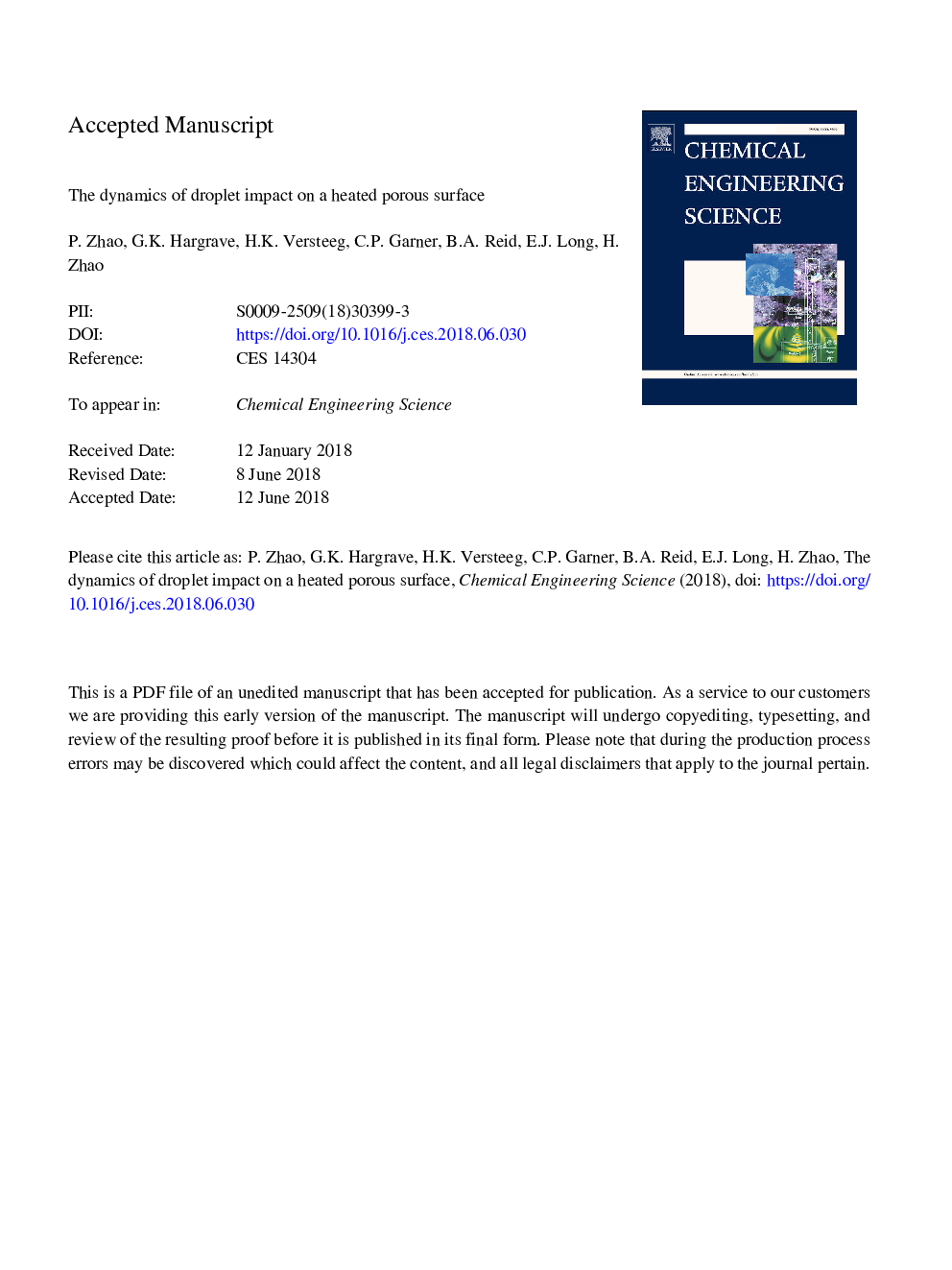| Article ID | Journal | Published Year | Pages | File Type |
|---|---|---|---|---|
| 6588319 | Chemical Engineering Science | 2018 | 37 Pages |
Abstract
In this paper, droplet impact on a porous surface is experimentally investigated over a wide range of Weber numbers and surface temperatures. Regime transition criteria have been deduced to determine droplet post-impingement behaviour as a function of the Weber number and surface temperature for which a droplet impacting on a porous surface. Based on the energy balance, an analytical model with improved boundary layer description is proposed to predict maximum spreading of droplet following impact on porous surfaces when the effect of heat transfer is negligible. The results of the model indicate that the spreading process after droplet impact on porous surfaces is governed by the viscous dissipation and matric potential. The maximum-spread model predictions agreed well with experimental measurements reported in this paper and the literature over a large range of Weber numbers and different porous surfaces.
Keywords
Related Topics
Physical Sciences and Engineering
Chemical Engineering
Chemical Engineering (General)
Authors
P. Zhao, G.K. Hargrave, H.K. Versteeg, C.P. Garner, B.A. Reid, E.J. Long, H. Zhao,
